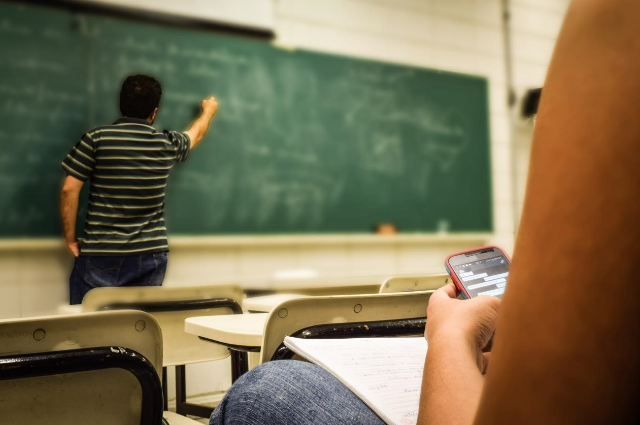
Photo by Pixabay
Introduction
In today's rapidly changing world, the traditional model of education is being challenged. As we navigate through a landscape shaped by technological advancements, global connectivity, and ever-evolving societal needs, it becomes evident that our education systems must adapt to prepare students for the complexities of the 21st century. The ability to think critically and creatively has never been more crucial, as it equips individuals with the skills to analyze, innovate, and navigate an increasingly complex and interconnected world. This article embarks on a journey to reimagine education, with a specific focus on nurturing creativity and critical thinking in the classroom. Rather than being confined within the boundaries of outdated pedagogical approaches, we advocate for an educational paradigm that empowers students to become active learners, confident problem solvers, and adaptable thinkers. In this article, we will explore the fundamental role that creativity and critical thinking play in education, debunking common misconceptions and shedding light on their interconnectedness. We will delve into the limitations of traditional education systems, examining the impact of standardized testing and rote memorization on stifling these essential skills. However, our primary focus will be on providing practical strategies and insights that can transform classrooms into vibrant hubs of creative exploration and critical inquiry.
Throughout the topics that follow, we will discuss the importance of creating an environment that encourages exploration and risk-taking, where students feel empowered to question, experiment, and learn from failure. We will explore the integration of open-ended projects, interdisciplinary learning, and collaborative approaches that stimulate creativity and foster critical thinking. Moreover, we will delve into the role of technology and innovation in enhancing these skills, while also addressing the ethical considerations that arise in this digital age. Recognizing the pivotal role of educators in this transformation, we will discuss the evolving role of teachers as facilitators of learning, emphasizing the need for ongoing professional development and reflective practice. Additionally, we will address the barriers and challenges that often impede progress, offering insights on how to overcome resistance and drive sustainable change.
Assessment is an integral part of any educational endeavor, and we will explore alternative assessment strategies that can effectively gauge creativity and critical thinking. By shifting the focus from traditional metrics to holistic evaluation methods, we can encourage students to demonstrate their abilities in authentic and meaningful ways. To bring these ideas to life, we will showcase case studies and success stories of schools and educators who have embraced creative and critical thinking approaches, highlighting their impact on student engagement and learning outcomes. These real-life examples will serve as inspiration and provide practical insights for educators and policymakers seeking to reimagine education. Ultimately, this article aims to ignite a collective effort to reimagine education for the better. It calls upon readers to take action and advocate for change in their respective educational environments. By nurturing creativity and critical thinking, we can equip the next generation with the skills they need to navigate the complexities of the world, solve complex problems, and contribute to a more innovative and inclusive society.
The Foundations of Creativity and Critical Thinking
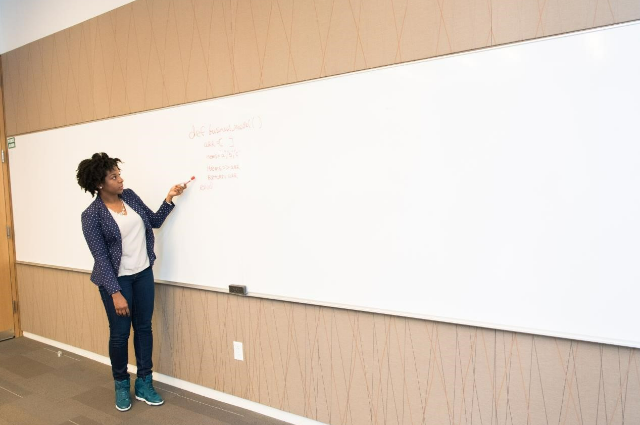
Photo by Christina Morillo from Pexels
Creativity and critical thinking are two interconnected pillars of intellectual development that are essential for thriving in a rapidly changing world. While they are distinct in nature, they complement and reinforce each other. Creativity can be defined as the ability to generate original and valuable ideas, solutions, and expressions. It involves thinking outside the box, breaking away from conventional patterns, and embracing novelty. Creativity encompasses various forms, including artistic expression, scientific innovation, entrepreneurial ventures, and problem-solving in everyday life. On the other hand, critical thinking is the process of actively and skillfully analyzing, evaluating, and synthesizing information to make reasoned judgments and decisions. It involves questioning assumptions, engaging in logical reasoning, considering multiple perspectives, and examining evidence to form well-informed conclusions. Critical thinking empowers individuals to navigate complex issues, identify biases, and adapt their thinking based on new information. Creativity and critical thinking are not isolated concepts but are deeply interconnected. Creative thinking often involves divergent thought processes, allowing for exploration of multiple possibilities and alternative perspectives. Critical thinking, on the other hand, employs convergent thinking, narrowing down options based on logical analysis and evaluation. Critical thinking provides a foundation for effective creative problem-solving by helping individuals evaluate the feasibility, relevance, and potential impact of their ideas. It encourages individuals to identify flaws in their own thinking, seek feedback, and refine their creative output. Creative thinking, in turn, enriches critical thinking by challenging existing assumptions, offering fresh perspectives, and inspiring innovative solutions to complex problems. By nurturing both creativity and critical thinking, individuals develop the ability to approach challenges with open-mindedness, adaptability, and resilience. This balanced cognitive skill set equips them to navigate uncertainties, solve intricate problems, and envision new possibilities.
Despite the immense value of creativity and critical thinking, several misconceptions surround these concepts. Debunking these myths is essential for understanding their true nature and fostering their development in educational settings. One common misconception is that creativity is limited to the arts or certain individuals deemed "creative." In reality, creativity is a universal human trait that can be nurtured and developed in various domains, including science, technology, engineering, mathematics, and everyday life. Every individual possesses creative potential, and it is the role of education to unleash and cultivate that potential. Another misconception is that critical thinking is solely about being skeptical or critical of everything. While critical thinking does involve questioning and evaluating information, it is not about cynicism or dismissing ideas outright. Instead, it encourages a balanced approach that combines skepticism with an open mind, intellectual curiosity, and a willingness to consider diverse perspectives.
The Current State of Education
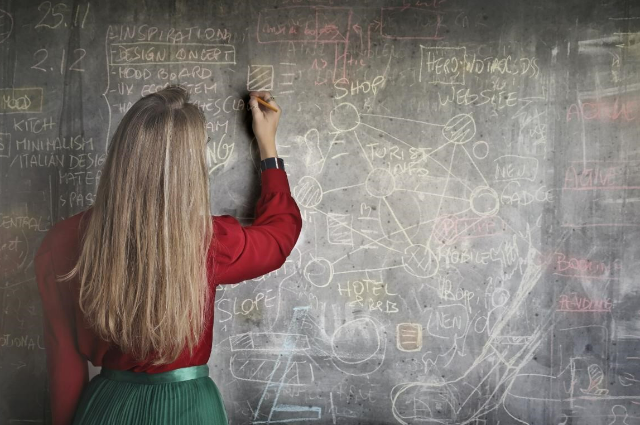
Photo by Andrea Piacquadio from Pexels
Traditional education systems have long been characterized by rigid structures, standardized curricula, and emphasis on rote memorization and regurgitation of information. While these approaches have their merits, they often fall short in cultivating creativity and critical thinking skills among students. One limitation is the overemphasis on standardized testing. The pressure to perform well on exams leads to a focus on memorization rather than deep understanding and application of knowledge. This approach narrows the scope of education, leaving little room for students to explore their own interests, think critically, or engage in creative problem-solving. Additionally, the hierarchical classroom model, where teachers are the primary sources of knowledge and students are passive recipients, inhibits the development of independent thinking and creativity. This model often discourages questioning, exploration, and divergent perspectives, stifling students' natural curiosity and dampening their creative potential.
Standardized testing, while intended to measure students' academic proficiency, can inadvertently hinder the development of creativity and critical thinking. By focusing on predetermined answers and rigid formats, these tests fail to assess students' ability to think innovatively or critically analyze complex problems. As a result, education systems that heavily rely on standardized testing may unintentionally sideline the skills and competencies crucial for success in the real world. Similarly, the prevalence of rote memorization in many educational settings undermines the cultivation of deep understanding and critical thinking. Instead of encouraging students to question, analyze, and synthesize information, rote memorization prioritizes the regurgitation of facts without context or application. This approach limits students' ability to think critically, solve problems creatively, and apply knowledge in practical situations.
In an era characterized by rapid technological advancements, global interconnectedness, and complex societal challenges, the need for creativity and critical thinking has become even more evident. The problems our society faces require innovative solutions that go beyond existing frameworks. Climate change, social inequality, technological disruptions, and ethical dilemmas demand individuals who can think creatively, critically evaluate information, and propose novel approaches to tackle these issues. Creativity and critical thinking are vital for fostering a culture of innovation, encouraging entrepreneurial thinking, and enabling individuals to adapt to an ever-evolving landscape. They empower students to become active participants in their own learning journey and equip them with the skills needed to navigate the complexities of the modern world. As we move forward, it is crucial to reassess and reimagine education to prioritize creativity and critical thinking. By addressing the limitations of traditional education systems and recognizing the significance of these skills, we can pave the way for an educational paradigm that nurtures innovative thinkers, problem solvers, and engaged global citizens.
Fostering Creativity in the Classroom

Photo by Pixabay
Creativity is a powerful force that fuels innovation, problem-solving, and personal growth. As educators, it is our responsibility to cultivate an environment that nurtures and encourages the creative potential of every student. By embracing new approaches and strategies, we can foster creativity in the classroom and empower students to become imaginative thinkers and innovative problem solvers. Creating an environment that encourages exploration and risk-taking is crucial to fostering creativity. When students feel safe and supported, they are more likely to step out of their comfort zones and embrace new ideas. It is essential to establish a classroom culture that values open communication, respects diverse perspectives, and celebrates the unique talents and strengths of each student.
Providing autonomy and choice is another key element in fostering creativity. Allowing students to have a say in their learning process empowers them to take ownership of their education. By offering opportunities for students to pursue topics of personal interest and allowing flexibility in project selection and presentation methods, we encourage independent thinking and decision-making. This autonomy sparks intrinsic motivation and ignites students' creative potential. Incorporating open-ended projects and problemsolving activities is an effective way to stimulate creativity in the classroom. These types of assignments provide students with opportunities to think critically, explore multiple solutions, and express their ideas in innovative ways. By presenting students with realworld challenges and encouraging them to develop their own unique approaches, we foster their creativity and help them develop valuable problem-solving skills. Open-ended projects are designed to have no predetermined right or wrong answers, allowing students to explore and experiment. They promote divergent thinking, where students generate multiple possibilities and solutions. Whether it's a research project, a hands-on experiment, or a creative art piece, open-ended projects give students the freedom to explore their passions and express their ideas in ways that resonate with them.
Problem-solving activities further cultivate creativity by presenting students with complex challenges that require critical thinking and creativity to solve. These activities encourage students to analyze problems from different angles, think creatively, and develop innovative solutions. By engaging in problem-solving, students learn to approach challenges with an open mind, embrace uncertainty, and think outside the box. To truly foster creativity in the classroom, it is important to shift our focus from a teacher-centered approach to a student-centered one. This involves providing guidance and support while allowing students the freedom to explore, experiment, and make discoveries on their own. As educators, we serve as facilitators, mentors, and guides, encouraging students to take risks, ask questions, and pursue their passions. By creating an environment that encourages exploration and risk-taking, incorporating open-ended projects and problemsolving activities, and embracing a student-centered approach, we can foster creativity in the classroom. Through these efforts, we empower our students to develop the skills and mindset necessary for success in an ever-changing world. As educators, we have the power to unleash the creative potential within each student and inspire a generation of innovative thinkers and problem solvers.
Cultivating Critical Thinking Skills
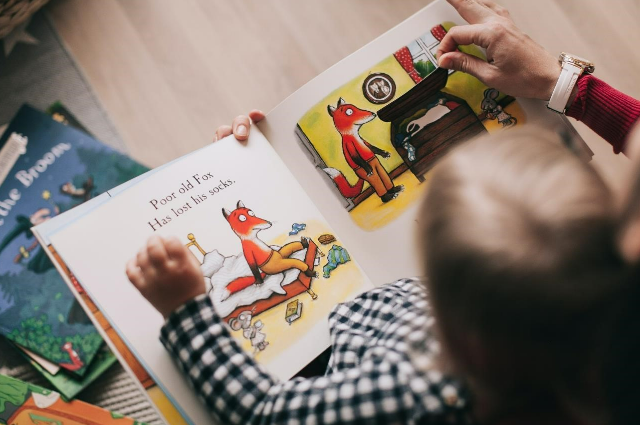
Photo by Lina Kivaka from Pexels
Critical thinking is a fundamental skill that empowers students to analyze information, evaluate evidence, and make informed judgments. It involves the ability to think independently, question assumptions, consider multiple perspectives, and arrive at wellreasoned conclusions. Cultivating critical thinking skills in the classroom is essential for empowering students to become active learners, effective problem solvers, and engaged citizens in an increasingly complex world.
- Promoting questioning:
Encourage students to ask thought-provoking questions and explore different angles of a topic. Emphasize the importance of questioning assumptions, seeking evidence, and evaluating information critically.
- Engaging in research-based projects:
Assign projects that require students to conduct research, analyze data, and draw conclusions based on evidence. Teach them how to evaluate the reliability and credibility of sources to develop their information literacy skills.
- Facilitating discussions:
Create opportunities for students to engage in meaningful discussions where they can share their perspectives, challenge each other's ideas, and develop critical thinking through active dialogue.
- Teaching logical reasoning:
Introduce students to logical frameworks such as deductive and inductive reasoning, syllogisms, and logical fallacies. Provide examples and exercises that allow them to practice applying logical thinking to real-life scenarios.
- Analyzing complex problems:
Present students with complex problems or case studies that require them to analyze information, identify patterns, and develop solutions. Encourage them to break down the problem into smaller parts and consider multiple perspectives.
- Using graphic organizers and visual representations:
Utilize graphic organizers and visual tools, such as mind maps or concept maps, to help students organize their thoughts, make connections, and visually represent complex information or arguments.
- Encouraging self-reflection:
Guide students in reflecting on their thinking processes, biases, and assumptions. Teach them to recognize and evaluate their own cognitive strengths and weaknesses to improve their critical thinking skills.
- Providing opportunities for self-assessment:
Incorporate self-assessment activities where students can evaluate their own work, reasoning, and problem-solving approaches. Encourage them to identify areas of improvement and set goals for their critical thinking development.
- Engaging in deliberate practice:
Offer opportunities for students to engage in deliberate practice, where they can intentionally practice and refine their critical thinking skills through challenging tasks, feedback, and reflection.
- Promoting collaborative learning:
Encourage students to work in groups or pairs to solve problems, analyze information, and discuss complex topics. Collaboration allows for the exchange of diverse perspectives and the development of critical thinking through dialogue and negotiation.
- Exposing students to diverse viewpoints:
Introduce students to diverse perspectives, cultures, and experiences to broaden their understanding of complex issues. Encourage respectful dialogue and critical analysis of different viewpoints to develop empathy and critical thinking skills.
- Incorporating real-world connections:
Connect classroom learning to real-world issues and challenges. Encourage students to critically analyze and evaluate how their learning applies to practical situations and broader societal contexts.
By incorporating inquiry-based learning, developing analytical thinking skills, promoting metacognitive reflection, and fostering collaboration and diverse perspectives, educators can cultivate critical thinking skills in the classroom. These skills are essential for students to become active learners, effective problem solvers, and informed decision-makers who can navigate the complexities of the modern world.
Integrating Technology and Innovation
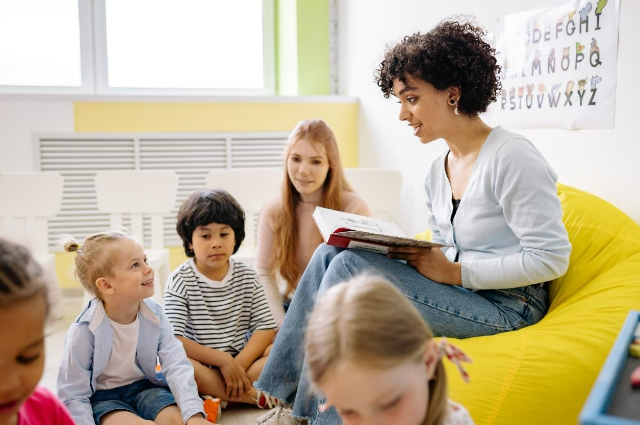
Photo by Yan Krukau from Pexels
In today's digital age, technology has become an integral part of our daily lives. When used purposefully and thoughtfully, technology can enhance learning experiences, foster creativity, and cultivate critical thinking skills in the classroom. By embracing technology and promoting innovation, educators can create dynamic and engaging learning environments that prepare students for the challenges and opportunities of the future.
Introduce students to reliable online resources, digital libraries, and databases that pr9ovide a wealth of information for research projects and critical analysis. Teach them how to evaluate the credibility and relevance of online sources. Also Equip students with the skills to navigate, evaluate, and synthesize digital information effectively. Teach them how to conduct advanced searches, critically assess online content, and cite digital sources responsibly. We should recommend educational websites, interactive learning platforms, and digital learning resources that allow students to explore topics of interest at their own pace. Foster a love for lifelong learning and independent research through technology.
We must introduce students to collaborative platforms, such as Google Docs, Padlet, or online discussion boards that enable them to work together, share ideas, and engage in meaningful discussions regardless of physical distance. Also use video conferencing tools to connect students with experts, guest speakers, or other classrooms around the world. Provide opportunities for students to engage in virtual conversations and learn from diverse perspectives. Just encourage students to participate in international projects or cultural exchanges through online platforms. Foster global awareness, empathy, and collaboration by connecting with students from different countries and backgrounds. We must students to a variety of digital tools that allow them to create and express their ideas creatively. This may include graphic design software, video editing tools, coding platforms, or multimedia presentation software. Explore the use of virtual reality (VR) and augmented reality (AR) to provide immersive and interactive learning experiences. These technologies can transport students to different environments, simulate real-world scenarios, and promote critical thinking and problem-solving. Attention should also be paid to Incorporating gamified learning experiences and educational apps that engage students and promote critical thinking skills. These tools can provide interactive challenges, problem-solving scenarios, and immediate feedback to enhance learning outcomes.
We can integrate design thinking principles and project-based learning approaches that encourage students to identify real-world problems, develop innovative solutions, and bring their ideas to life using technology. Introduce students to coding and robotics to foster computational thinking, problem-solving skills, and innovation. Encourage them to design and create their own programs, games, or robots to address challenges or automate tasks. Teach students about entrepreneurship, digital marketing, and ecommerce. Encourage them to develop their own innovative business ideas, create digital marketing strategies, and use technology to showcase and sell their products or services.
By integrating technology and fostering innovation, educators can create transformative learning experiences that empower students to think critically, solve complex problems, collaborate effectively, and adapt to the ever-changing digital landscape. It is important to approach technology integration with a pedagogical focus, ensuring that technology serves as a tool to enhance learning and foster creativity, rather than a mere distraction. With a purposeful and forward-thinking approach, technology becomes a catalyst for educational innovation and equips students with the
Empowering Teachers as Facilitators
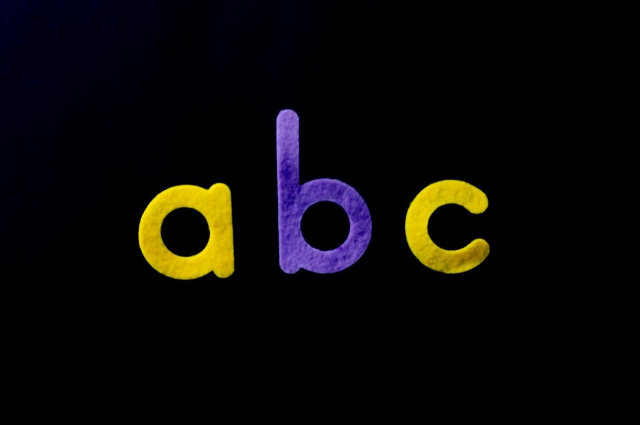
Photo by Magda Ehlers
In the reimagined classroom, teachers take on the role of facilitators, guiding and supporting students in their journey of learning, creativity, and critical thinking. As the educational landscape evolves, it becomes essential to empower teachers with the knowledge, skills, and tools they need to effectively facilitate the development of creativity and critical thinking among their students. Offer workshops, conferences, and online courses that focus on pedagogical approaches, instructional strategies, and assessment methods that foster creativity and critical thinking. Encourage teachers to engage in lifelong learning to stay updated with emerging educational trends and practices.
We must promote student-centered instructional approaches that empower students to take ownership of their learning. Encourage teachers to facilitate inquiry-based learning, project-based learning, and collaborative activities that foster creativity and critical thinking. Introduce teachers to adaptive technology tools that can personalize learning experiences, provide real-time feedback, and adapt to students' individual progress. These tools can assist teachers in tailoring instruction to meet students' specific needs and promote critical thinking skills. Teachers should model a growth mindset by embracing challenges, learning from failures, and demonstrating a passion for continuous improvement. Encourage teachers to share their own stories of growth and resilience with their students to inspire a culture of perseverance and innovation and also foster a feedback-rich environment where teachers provide timely and constructive feedback to students. Encourage all the feedback that focuses on the process, effort, and critical thinking skills demonstrated, rather than solely on the end result.
Timely recognize and celebrate students' progress and effort in developing their creativity and critical thinking skills. Encourage teachers to highlight growth, perseverance, and innovative thinking to foster a positive and supportive classroom culture. We should not forget to promote collaboration among teachers from different disciplines to design interdisciplinary projects and activities. This interdisciplinary approach encourages students to make connections between different subject areas and develop holistic thinking skills. Emphasize the integration of arts and humanities into the curriculum to enhance creativity and critical thinking. Encourage teachers to incorporate music, visual arts, drama, literature, and other creative outlets into their lessons to inspire imagination and divergent thinking. Foster partnerships between schools and community organizations, businesses, or experts in various fields. These partnerships provide opportunities for students to engage in real-world problem-solving, internships, or mentorship programs that foster creativity and critical thinking.
Overcoming Barriers and Embracing Change
While the benefits of nurturing creativity and critical thinking in the classroom are clear, there are often barriers that hinder the implementation of innovative approaches to education. Overcoming these barriers and embracing change is essential to create a learning environment that prepares students for the challenges of the future. Acknowledge that change can be met with resistance and apprehension. Foster a culture of openness and continuous improvement, encouraging teachers, students, parents, and administrators to embrace new ideas and approaches.
We can provide professional development opportunities for all stakeholders involved in education to raise awareness about the importance of creativity and critical thinking. And also highlight the benefits of these skills in preparing students for the rapidly changing world. We must think about how we can create networks and communities where teachers, administrators, and parents can share success stories, challenges, and strategies for fostering creativity and critical thinking. Support from peers and mentors can help overcome resistance to change. Just advocate for adequate technology infrastructure, including reliable internet access, devices, and software, to support the integration of technology and innovative practices in the classroom. Seek partnerships with organizations or apply for grants to bridge resource gaps. Ensure that teachers have access to ongoing professional development opportunities that equip them with the knowledge and skills needed to nurture creativity and critical thinking. Collaboration should be there with educational institutions and organizations to provide accessible and affordable training programs. Adequately allocate resources effectively to support the implementation of innovative practices. Prioritize funding for materials, tools, and resources that promote creativity and critical thinking, such as art supplies, scientific equipment, or digital learning platforms. Move away from traditional, solely contentfocused assessments and embrace assessment methods that capture students' creativity, critical thinking, and problem-solving abilities. Incorporate project-based assessments, portfolios, self-reflection, and peer feedback. Ensure that assessments align with the intended learning outcomes. And also clearly communicate the importance of creativity and critical thinking in assessment criteria and provide guidance to students on how they can demonstrate these skills. Shift the focus from grades and final outcomes to the growth and progress students make in their creative and critical thinking abilities. Encourage students to set personal goals, reflect on their learning journey, and celebrate their development over time.
We must try to foster collaboration among educators by providing dedicated time for collaborative planning, sharing of best practices, and peer observation. Encourage teachers to learn from one another and adapt innovative strategies to their own classrooms and seek support from school administrators who can champion the importance of creativity and critical thinking in education. Also the authorities may provide opportunities for administrators to observe innovative practices, engage in dialogue with teachers, and allocate resources accordingly. They must thrive to engage parents and the wider community in the educational process and communicate the value of creativity and critical thinking skills and involve parents in supporting their child's learning through home-based activities, workshops, and community events. Overcoming barriers and embracing change requires a collective effort from all stakeholders involved in education.
By shifting mindsets, addressing resource constraints, redefining assessment practices, and fostering collaboration and support, we can create an educational ecosystem that encourages creativity and critical thinking. With determination and a shared vision, we can prepare our students to thrive in a world where innovation and adaptability are paramount.
Case Studies and Success Stories
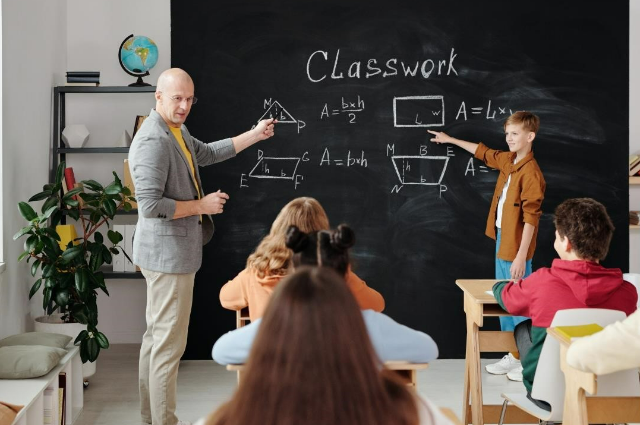
Photo by Max Fischer from Pexels
Real-life case studies and success stories provide valuable insights into the implementation of creativity and critical thinking in the classroom. These examples showcase the transformative impact of innovative approaches to education and inspire educators to reimagine their own teaching practices. Here are a few noteworthy case studies and success stories: At Jefferson Middle School, the STEAM (Science, Technology, Engineering, Arts, and Mathematics) Initiative was implemented to foster creativity and critical thinking among students. Through project-based learning, students collaborated on interdisciplinary projects that integrated the arts and sciences. For example, in a sustainable design project, students were tasked with designing and constructing a model eco-friendly city. They engaged in research, problem-solving, and critical analysis to address environmental challenges. This initiative not only enhanced students' creativity and critical thinking skills but also developed their teamwork, communication, and problem-solving abilities.
At Wilson Elementary School, the Curiosity Corner was established as a dedicated space for inquiry-based learning. Students were encouraged to ask questions, investigate, and explore topics of interest. In one project, students delved into the concept of renewable energy. They researched various sources, conducted experiments, and analyzed data to understand the benefits and limitations of renewable energy options. Through this inquirybased approach, students developed their critical thinking skills, learned to gather and evaluate evidence, and gained a deeper understanding of complex scientific concepts.
At Roosevelt High School, a coding and robotics program was introduced to promote creativity and critical thinking through technology. Students learned coding languages, such as Python and Java, and applied their skills to build and program robots. In a robotics competition, students were challenged to design robots capable of solving real-world problems. This program not only nurtured students' technical skills but also fostered their creativity, critical thinking, and problem-solving abilities. Students developed innovative strategies, collaborated in teams, and honed their analytical thinking to overcome challenges. At Johnson Middle School, an environmental stewardship project engaged students in a community-based initiative. Students identified environmental issues in their local community and collaborated with community organizations to address them. They conducted research, gathered data, and proposed sustainable solutions. For example, students organized a recycling program to reduce waste and raise awareness about environmental conservation. Through this project, students not only developed their creativity and critical thinking skills but also gained a sense of civic responsibility, empathy, and leadership. These case studies and success stories demonstrate the positive outcomes of nurturing creativity and critical thinking in the classroom. They showcase how innovative approaches to education can empower students to become active learners, problem solvers, and engaged citizens. By sharing these examples, educators can draw inspiration, learn from best practices, and adapt successful strategies to their own educational contexts.
The Future of Education
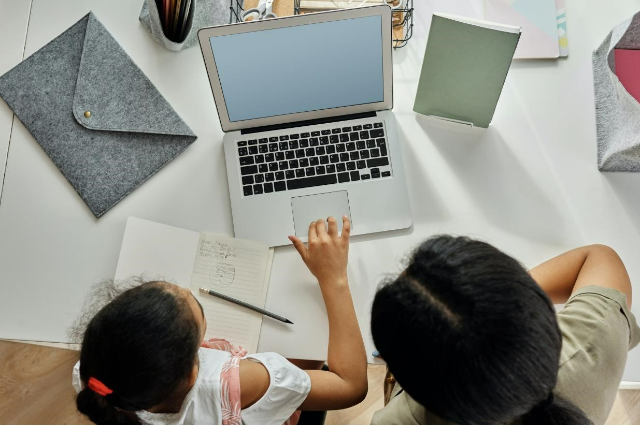
Photo by August de Richelieu
As we reflect on the importance of nurturing creativity and critical thinking in the classroom, it is essential to consider the future of education and the evolving landscape in which students will live and work. The rapid pace of technological advancements, globalization, and societal changes demand a reimagined educational system that prepares students for the opportunities and challenges ahead.
The future of education lies in embracing a learner-centered approach, where the unique needs, interests, and strengths of each student are at the forefront. This shift involves personalized learning pathways, flexible instructional models, and the integration of student voice and choice. By tailoring education to individual students, we can foster their creativity, critical thinking, and passion for lifelong learning. In an era of rapid technological advancements and automation, it is crucial to equip students with the skills they need to thrive in the future workforce. These skills include complex problem-solving, critical thinking, creativity, adaptability, collaboration, communication, and digital literacy. The future of education will focus on cultivating these skills, preparing students to navigate a dynamic and unpredictable world.
Technological innovations, such as artificial intelligence, virtual reality, augmented reality, and blockchain, are reshaping various industries. The future of education will leverage these emerging technologies to enhance learning experiences, provide immersive and interactive environments, and expand access to education. Integrating these technologies thoughtfully and ethically will empower students to explore, create, and think critically in ways that were previously unimaginable. In an increasingly interconnected world, the future of education must prioritize the development of global citizenship. Students need to understand diverse perspectives, appreciate different cultures, and collaborate with individuals from various backgrounds. Education should foster empathy, cultural competence, and an awareness of global issues, enabling students to become responsible global citizens who contribute positively to society. The future of education extends beyond the classroom walls and encompasses the concept of lifelong learning. As technology continues to advance and industries evolve, individuals must embrace a mindset of continuous learning and adaptability. Education should instill a love for learning, critical thinking skills, and the ability to navigate and make sense of vast amounts of information, empowering individuals to succeed in a rapidly changing world.
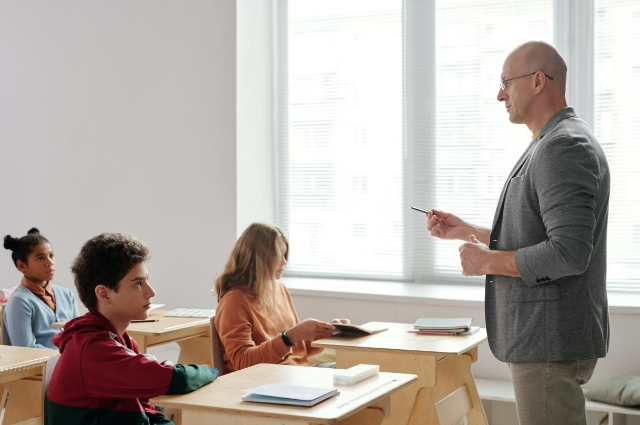
Photo by Max Fischer
The future of education calls for increased collaboration and partnerships among educational institutions, industry leaders, government agencies, and community organizations. By working together, we can leverage collective expertise, resources, and insights to shape an educational system that meets the needs of students and prepares them for the future. Collaboration fosters innovation, enriches learning experiences, and ensures the relevance and effectiveness of education in a changing world. As we envision the future of education, it is imperative to approach it with a forward-thinking mindset, embracing innovation, creativity, and critical thinking as foundational pillars. By nurturing these skills in the classroom, integrating emerging technologies, and cultivating global citizenship, we can prepare students to thrive in a future that is complex, interconnected, and full of possibilities. Education is not merely a means to an end but a lifelong journey that empowers individuals to adapt, create, and contribute meaningfully to society.
Conclusion
In this article, we have explored the importance of nurturing creativity and critical thinking in the classroom as we reimagine education for the future. We have discussed the foundations of creativity and critical thinking, examined the current state of education, and explored strategies for fostering creativity, cultivating critical thinking skills, integrating technology and innovation, and empowering teachers as facilitators. Additionally, we have addressed the barriers to change and highlighted the significance of case studies and success stories in inspiring educators. It is evident that nurturing creativity and critical thinking is not just a desirable addition to education but a fundamental necessity. As we prepare students for an ever-evolving world, they need the skills and abilities to think critically, solve complex problems, adapt to change, and contribute to society as creative and innovative thinkers. By fostering creativity and critical thinking, we empower students to become lifelong learners, effective communicators, and active participants in shaping their own future. However, the journey towards reimagining education is not without its challenges. It requires a collective effort from educators, administrators, policymakers, parents, and communities to overcome resistance to change, allocate resources effectively, redefine assessment practices, and foster collaboration and support. Together, we can create an educational ecosystem that empowers students and prepares them for the demands of the future.

Photo by Max Fischer
As we look ahead to the future of education, we must embrace a learner-centered approach, develop future-ready skills, integrate emerging technologies, cultivate global citizenship, and foster a culture of lifelong learning. The possibilities are immense, and the potential for transformative change is within our reach. Let us embark on this journey with passion, dedication, and a shared vision to create an educational system that nurtures creativity, fosters critical thinking, and empowers students to thrive in a world full of opportunities and challenges. In reimagining education, we have the power to shape the future and unlock the full potential of every learner. Together, let us embark on this transformative journey, placing creativity and critical thinking at the heart of education, and empower a generation of learners who will shape a brighter tomorrow.
